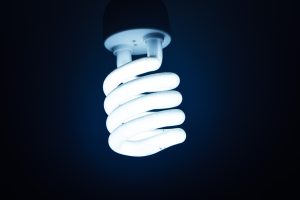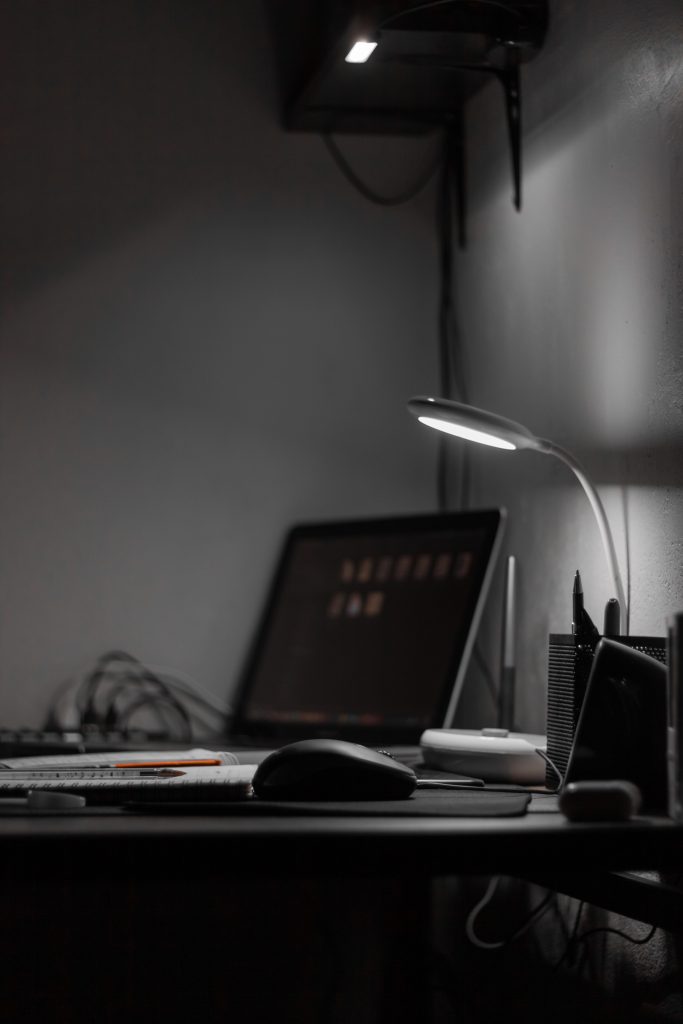How To Solve the LED Light Flickering Problem?
1. What is LED light flickering?
LED lights are the kind that can be found all over the streets for the big cities that are now feasting. At night, the neon lights composed of LED lights will illuminate the entire street. LED lights are energy-saving, long-life lights, but they also encounter some problems in use. LED lights are not only seen in street markets, but also many people choose them when they are home improvement. This is because it is not only bright but also energy efficient. But sometimes it is always flashing, which makes people very uncomfortable.
Have you ever seen a stroboscopic image when a mobile phone camera shoots an LED light source, but it is normal when viewed directly with the naked eye? In fact, the “strobe effect” is a perceptible flickering effect, usually when the phone is facing the LED light source when shooting Will appear.
People often have a tendency known as “persistence of vision”. We are able to perceive things continuously, even when they are no longer in front of our eyes, and we are able to see “persistent images” rather than a discrete set of static images.
The LED light source flickers at a high frequency that is imperceptible to the naked eye, so we see the light on until we turn the power off completely. Also, a video is actually a series of images captured in rapid succession, which are captured in frames per second, and when we play games together, this constant vision tricks our brain into turning the screen away The event above is regarded as a continuous fluid motion.
When the number of frames per second exceeds the frequency of the LED light source, the camera of the mobile phone exhibits an obvious flickering effect, which is the stroboscopic effect.
The LED light will flicker when it is rapidly switched on and off, depending on the nature of the current supplied to it. Typically, LED lights flicker at a very high frequency that the human eye cannot directly detect, or is invisible to the human eye, so one can rest assured that any visible camera flicker is actually a normal light operation, and the only thing that should be of concern to humans is wink. However, it is a very broad statement to say that the LED lights are always blinking when in operation.

2. Why does the LED light flicker?
When the LED lights flicker, there will be different reasons according to the actual situation. In most cases, it is mainly caused by the following reasons:
(1) The LED light bead does not match the LED drive power supply. Normally, a single 1W light bead withstands current: 80-300mA, and voltage: 3.0-3.4V. If the light bead chip is not of sufficient power, it will cause the light source to flicker. Phenomenon, if the current is too high, the light bead will turn on and off when it can’t bear it. In serious cases, the gold wire or copper wire built into the light bead will be blown, causing the light bead to not light up.
(2) It may be that the drive power supply is broken, as long as you replace it with another good drive power supply, it will stop flashing.
(3) If the driver has an over-temperature protection function, and the heat dissipation performance of the material of the light cannot meet the requirements, the over-temperature protection of the driver will start to work, and there will be a phenomenon of flashing and disappearing. , it will become like this if the cooling work is not done well.
(4) If the outdoor lights also flicker on and off, it means that the lights have entered the water. The light bead and driver are broken, and the consequence is that it will not light up when it flashes.
(5) DC current: When the DC power supply provides power to the LED lights, the DC power supply here is usually the battery, and the LED light diodes are always in a charged state, so they continuously release light energy and remain on until the Circuit disconnected. When the mobile phone camera shoots the LED light powered by DC current, the screen will appear continuous strobe.
(6) Alternating current: Alternating current is usually provided by a power source such as a wall socket. In essence, the alternating current is turned on 2 times and turned off 3 times in a cycle, so the excited electrons consume all the energy in the form of light, Return to the electron enclosure 3 times, then fire again. Therefore, an LED light connected directly to AC power will appear to flicker in the video.
(7) Pulse width modulation: With the continuous development of transmission technology, the strobe of the mobile phone camera caused by LED lights is not only due to the AC or DC power supply, but also the LED lights powered by the driver will flicker. In order to reduce power consumption, the power supply Can be bundled into discrete pulses of current, rather than continuous power, which is known as pulse width modulation and is commonly used in automotive fluorescent lights.

3. How to solve the LED light flickering problem?
LED lighting requires direct current (DC) rather than AC power, so the key to eliminating LED flicker is the type of power source you use to drive the light.
Although the lighting industry often refers to their power supplies (aka “drivers”) simply as “LED transformers,” they are actually much more than just a single function of transformer. LED drivers don’t just step down (switch) voltage. It can also convert electrical current from alternating current to direct current. Choose a quality LED power supply that will also provide constant current to your LEDs. So we get no perceptible but flickering light.
However, low quality, compact LED drivers can’t provide constant current, which is why we usually know the argument that you can’t buy cheap LED lights, and the cost of complex power supplies must be slightly higher. It simply converts the current from alternating current to direct current. This most basic power conversion produces an oscillating current, although typically doubling the input voltage frequency, which may result in a flicker rate of 100 times per second.
100 blinks per second is obviously much better than 50 blinks per second. But this is still a problem. According to a large number of LRC experiments, when the flicker frequency of the light source is greater than 2kHz, the adverse effect on the human body through vision becomes imperceptible. The definition of stroboscopic in international standards is also defined by whether the light source affects the human body through vision. A further explanation is that no matter whether the vision feels flickering or not, as long as the stroboscopic flicker affects the human body through vision, it is considered that the stroboscopic flicker exists.
Over the past decade, LEDs have been heavily promoted by the lighting industry and countries as the energy-efficient lighting solution of the future. But in order to reduce the impact of LED strobe, we can mainly pay attention to the following product information:
(1) Always use an LED power supply designed for work to drive LED products.
(2) Any LED strips powered by AC power will flicker.
(3) Make sure all LED products are compatible with the control circuit and power supply you use.
(4) Check for loose wiring and other faulty connections. And make sure your LED dimmer is not overloaded.
(5) Consider using a constant current LED driver.
(6) When installing a dimming system, try to see if there is a minimum dimming level that should not be lower.
(7) For dimming systems, consider using zero to 10V or digital voltage dimming systems.

4. Concluding
Seeing all above content, everyone must have some understanding of why LED lights flicker?
Stroboscopic can cause varying degrees of impact on human health. According to professionals, stroboscopic light sources are closely related to neurological diseases such as migraine, headache, autism, visual fatigue and discomfort, which can seriously cause illusions to the human eye and cause accidents. Therefore, preventing and solving the flickering problem of LED lights is also very important to the daily life of residents.
Here are some reminders for you to pay attention to when installing and using LED lights:
(1) Please select a suitable installation location. It is suitable for installation in indoor and outdoor places with good ventilation, air corrosive gases, non-combustible substances and less dust.
(2) Before installation, it is best to connect the light first, and then confirm whether the light is on. After installation, the light does not turn on in order to prevent transportation or other reasons. When installing, the wide side should be tightly locked on one side of the light mask, and the narrow side should be locked with the lightshade. Wires cannot be extended casually, especially the wires connecting the light bulbs.
(3) When using LED bulbs and ballasts together, the power should be the same, but the deviation should be within an acceptable range of about 10%.
(4) Chemicals cannot be used casually on the metal part, and the dust behind the light should be avoided to be washed with water directly.
(5) Preventing moisture is the key to maintenance. In places where a humid environment is likely to be formed, a moisture-proof lightshade should be installed to prevent moisture intrusion, rust or leakage.
(6) The drive inside the LED light is powered by the power supply. It is recommended that non-professionals do not disassemble and assemble it by themselves to avoid dangers such as electric shock.
(7) Do not use in high temperature and high humidity environment, LED lights are usually used when the ambient temperature is 5 ~ 40 degrees Celsius.
(8) It is best not to rinse with water, just use a dry rag slightly dipped in water to clean it. If you accidentally come into contact with water, try to dry it as much as possible, and never wipe it with a rag after turning on the light.
(9) In a low temperature environment, the LED lights used should have good sealing.
The above is the author’s introduction to the whole content of LED light stroboscopic problems and precautions, and I hope it will be helpful to everyone. If you want to learn more about it, stay tuned to Tachyon!


